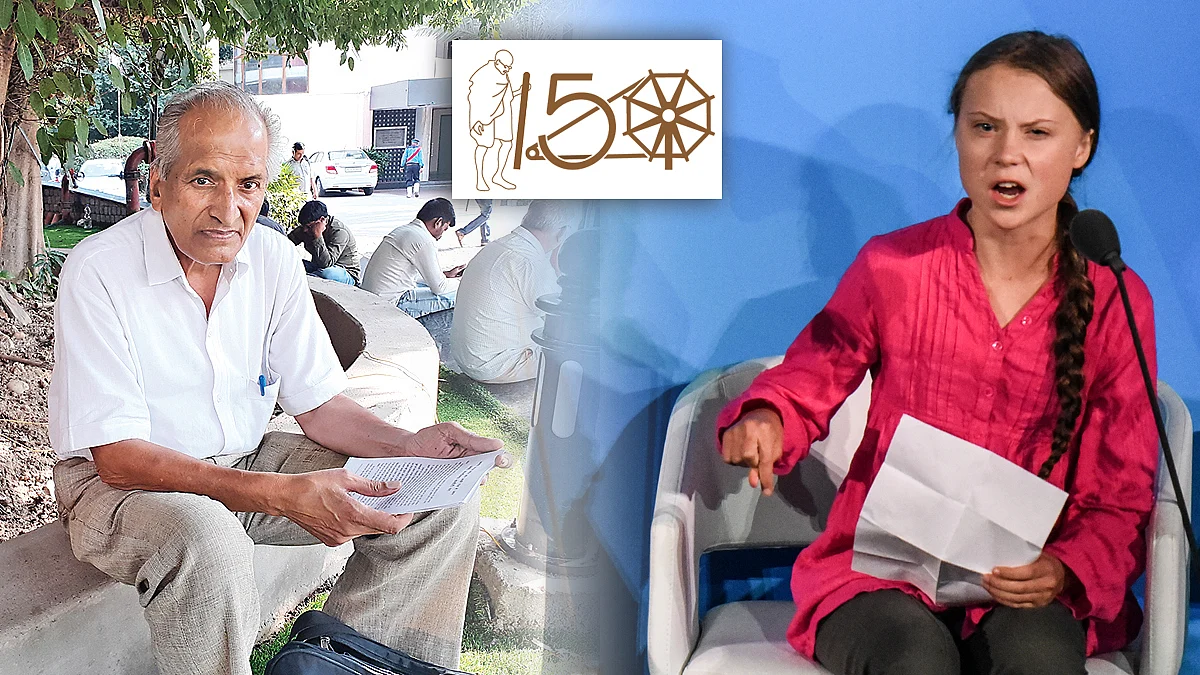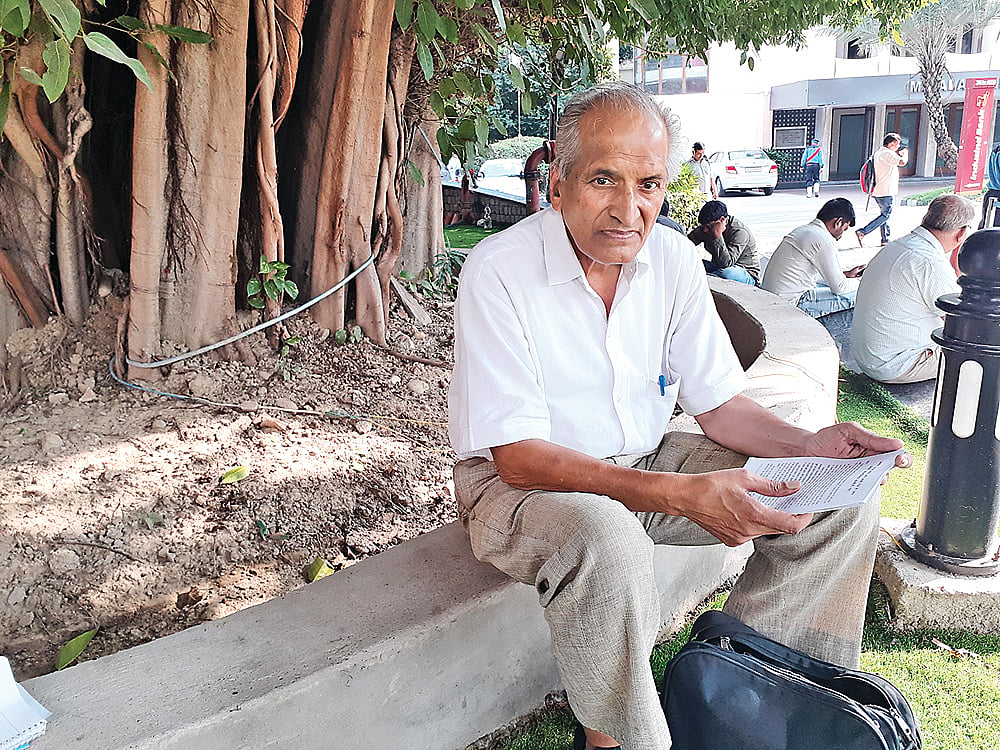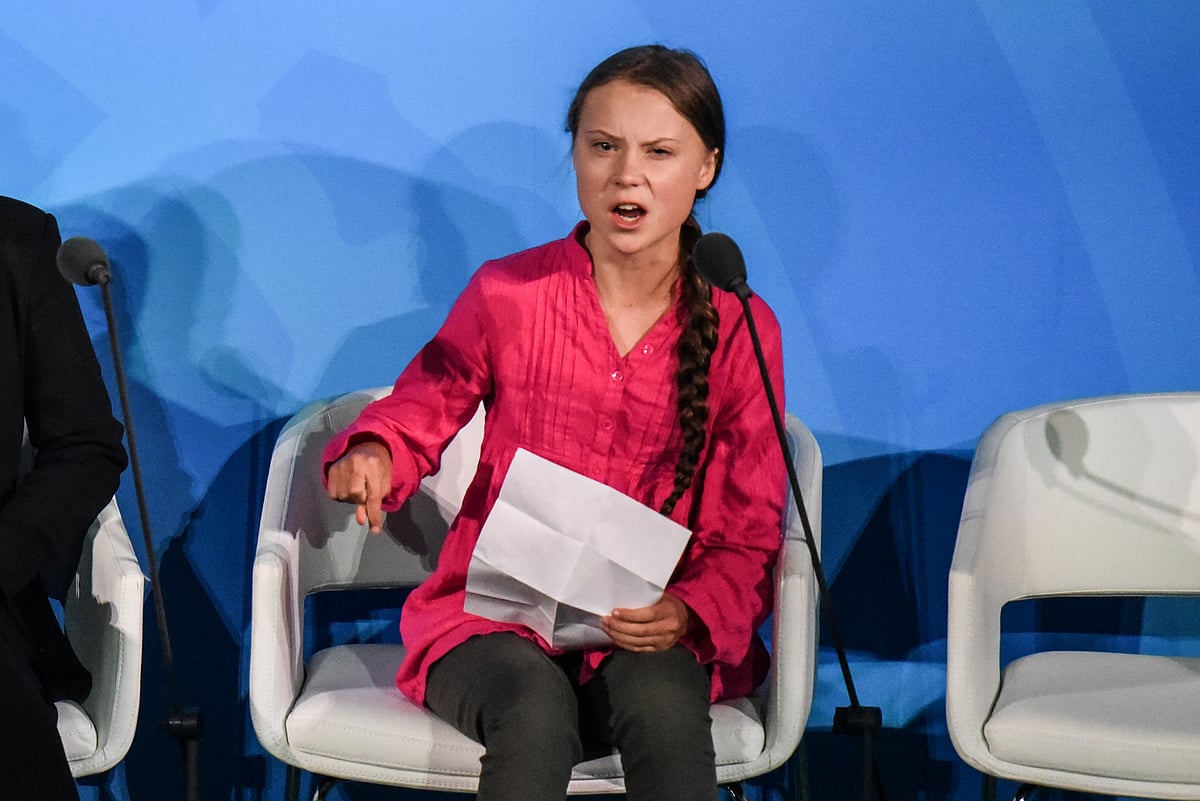Gandhi taught people to overcome fear
What are those essential truths which Gandhiji embodied which made him indestructible? I will highlight here some aspects which make Gandhiji as relevant today as he was during his lifetime

What are those essential truths which Gandhiji embodied which made him indestructible? The answers could be many. I will highlight here some aspects which make Gandhiji as relevant today as he was during his lifetime. Gokhale, whom Gandhiji called his ‘political guru’, noted: ‘he has in him the marvellous spiritual power to turn ordinary men around him into heroes and martyrs’.
It was his success in devising the method, which he named Satyagraha, of turning ordinary people into heroes and martyrs, that gave Gandhiji the ability to influence decisively the history of India, and indeed of the world. Satyagraha, or truth-force, for Gandhiji, was not an abstract philosophical concept, but a weapon forged in the flame of struggle and sharpened on the whetstone of hard political practice. The word literally means to insist on the truth. The heart and soul of Satyagraha is resistance, resistance to any form of wrong-doing or unfreedom, be it racism, colonialism, communalism, caste oppression, patriarchy, denial of democracy, inequity or economic deprivation. It encompasses a vast array of forms of struggle, bound only by the limits set by non-violence. Gandhiji’s notion of Satyagraha embodies a complex strategy of militant struggle of which non-violence was one part. It involves a deep understanding of the nature of the modern state, of the capacity of the people to struggle, of the appropriateness of different forms of struggle at different points of time.
Satyagraha ranges from non-co-operation to civil disobedience, from spinning of yarn to boycott and burning of foreign cloth, from boycott of courts to non-payment of taxes, from selling banned literature to making prohibited salt, from going on a hartal to going on a fast unto death. It includes rallies and mass meetings, sit-ins and long marches, candle-light vigils and offering of flowers to opponents.
Gandhiji believed that if the masses were politically active, they could secure any goal they desired. For him, non-violence was important not only as a moral value, but because it enabled and necessitated the participation of the people. A non-violent movement could only be successful if it had mass participation, and mass participation could only be secured if the movement was non-violent, thus ran the Gandhian dialectic.
The choice of non-violence, as argued by Bipan Chandra, also had nothing to do with any class bias in favour of the propertied classes, but became necessary in a hegemonic struggle, ‘a struggle on the terrain of moral force’, in which a disarmed people are not at a disadvantage visa-vis the government. To quote Gandhiji, “An able general always gives battle in his own time on the ground of his choice. Nonviolence ensured that the ground, the terrain, was the moral one. In Bipan Chandra’s words, “non-violence is also a way of becoming equal in political resources to an armed state.”
Also Read: Gandhi: A rare man on earth
To a crowd who came to his ashram, a day before the beginning of the Dandi March in 1930, Gandhiji explained how non-violence enabled the widest participation of the masses, and put the government in an unenviable quandary: “Though the battle is to begin in a couple of days, how is it that you can come here so fearlessly? I do not think any one of you would be here if you had to face rifle-shots or bombs. But you have no fear of rifle-shots or bombs? Why? Supposing I had announced that I was going to launch a violent campaign (not necessarily with men armed with rifles, but even with sticks or stones), do you think the Government would have left me free until now? Can you show me an example in history (be it in England, America or Russia) where the state has tolerated violent defiance of authority for a single day? But here you know that the Government is puzzled and perplexed.” Further explaining the power of non-violent mass civil disobedience, he said: “Supposing ten persons in each of the 700,000 villages in India came forward to manufacture salt and to disobey the Salt Act, what do you think this Government can do? Even the worst autocrat you can imagine would not dare to blow regiments of peaceful civil resisters out of a cannon’s mouth. If only you will bestir yourself just a little, I assure you we should be able to tire this government out in a very short time.”
Gandhiji demonstrated in movement after movement how non-violent Satyagraha worked by placing the government in a no-win situation. It immobilised the government by locking it in an irresolvable dilemma. If it did not suppress a movement that brazenly defied its laws, its administrative authority would be seen to be undermined and its control would be shown to be weak, and if it suppressed it, it would be seen as a brutal, anti-people administration that used violence on non-violent agitators. In either case, it was the government that suffered a blow to its prestige, and the movement which witnessed a swelling of its ranks.
“If we do too much, Congress will cry ‘repression’ … if we do too little, Congress will cry ‘victory’”, is how C.F.V. Williams, a British civil servant based in Madras expressed the dilemma in early 1930. In the Gandhian method, empowerment was also achieved through inculcating fearlessness in the people. As Jawaharlal Nehru put it: “The essence of his (Gandhiji’s) teaching was fearlessness… not merely bodily courage but the absence of fear from the mind…But the dominant impulse in India under British rule was that of fear, pervasive, oppressing, strangling fear; fear of the army, the police, the widespread secret service; fear of the official class; fear of laws meant to suppress and of prison; fear of the landlord’s agents, fear of the money-lender; fear of unemployment and starvation, which were always on the threshold. It was against this all-pervading fear that Gandhiji’s quiet and determined voice was raised: Be not afraid”. Gandhiji himself pointed out how non-violent struggle was the choice of the brave, not of the weak.
In his Hind Swaraj, Gandhiji wrote: “What do you think? Wherein is courage required – in blowing others to pieces from behind a cannon, or with a smiling face to approach a cannon and be blown to pieces? …. Believe me that a man devoid of courage can never be a passive resister.” Gandhiji’s emphasis on non-violence was also linked to his deep conviction that you could not separate the means from the end. In fact, he believed that the means were bound to shape the end.
You could not hope to build a humane, caring, inclusive, and free society on the shaky foundation of violence. The gun that is aimed at the enemy can easily be turned to cow down a comrade with whom you now disagree. That Gandhiji’s life, his ideas, his ideals, and his practice remain relevant to India and the world is testified to by the vast number of people and movements that have been inspired by his example. The Black Civil Rights Movement in the US-led by the legendary Martin Luther King consciously adopted Gandhian methods of non-violent struggle, as did many years later the Solidarity movement led by Lech Walesa against the Polish state, which was reputed to be the hardest regime in the Eastern Europe Soviet bloc.
Gandhian methods were found to be effective both in the democratic climate of North America as well as in the cold winds of Stalinist orthodoxy. The Peace Movement in Europe as well as the Green Movement the world over have followed Gandhian methods. The Truth and Reconciliation Commission in South Africa was in tune with the Gandhian worldview. Other pro-democracy and anti-authoritarian movements across the world, in South Korea, in the Phillipines, in the Soviet Union and Eastern Europe, in the last quarter of the 20th century have all fought and won non-violent battles in which the weapons have been candles and roses, not bullets and bombs.
As late as 2013, in Egypt, in the anti-authoritarian mass demonstrations and mass sit-ins in Tahrir Square in Cairo, protestors at the barricades were circulating in thousands and reading extracts from the works of Gene Sharp, an American scholar who has spent a life time writing and propagating Gandhi’s methods of non-violent struggle. In Hong Kong, hundreds of thousands of pro-democracy protestors throng the streets every weekend, defying the notoriously unbending Chinese state. Despite episodes of violence, the movement has retained its essentially non-violent character. In India, too, a large variety of movements have been based on the Gandhian vision of a non-violent, humane, eco-friendly, egalitarian, democratic and secular world.
Some of the prominent examples are the Bhoodan or land distribution movement led by Vinoba Bhave, the Chipko Movement for saving the forests in Uttarakhand, the Narmada Bachao Andolan led by Medha Patkar against the displacement caused by big dams, and many lesser-known movements such as anti-liquor protests by women’s groups, movements of tribal communities against their homes and sacred places being taken over by big corporations and governments in the name of development, the movement for abolition of child labour and right to education initiated by voluntary organisations such as the MV Foundation led by Shantha Sinha in Andhra Pradesh, movements for transparency such as the Right to Information led by the MKSS, as well as the campaigns for Right to Food, Right to Work and Right to Forests. Hundreds of civil society groups that emerged to counter the communal atmosphere generated by events such as the demolition of the Babri Masjid in 1991 and the violence that followed in its aftermath, by the communal violence in Gujarat in 2002, by the Muzzafarnagar violence in 2013, or by the new form of communal attacks on individuals in the form of lynching on the pretext of cow protection, seek to follow in his footsteps. It is hardly surprising that given Gandhiji’s strong views in favour of secularism, communal harmony and equal rights of all citizens regardless of faith, and especially given his martyrdom in that cause, inevitably all those who take a stand in favour of those ideals and against attempts to destroy those ideals, invoke his name and his legacy and lean on his memory.
Also Read: Means and ends are what seeds are to trees
There is no icon more powerful than him that movements espousing secular democracy can hold aloft. As I write these words, in the midst of the gloom enveloping India, I see two rays of sunshine piercing the darkness. One comes from a far-off land, near the top of the world, and the other from India’s holiest city. Greta Thunberg, a Swedish teenager, all of sixteen years old, addressed the UN Climate Action Summit called by the UN chief Antonio Guterres on 23rd September 2019, which was attended by 500 young activists. This was the culmination of a year-long protest movement by students and youth kicked off by Greta Thunberg’s lone protest outside the Swedish Parliament where she sat every day from 20 August to 9 September 2018, instead of going to school, asking for action on the issue of climate change.
This led to weekly protests by other school students every Friday and soon snowballed into a worldwide protest movement called “Fridays for Future” in which hundreds of thousands of school students joined. Her call, “So everyone out there, it is now time for civil disobedience. It is time to rebel”, has resonated loudly and on Friday, 20th September 2019, “millions of people demonstrated across the world demanding urgent action to tackle global heating, as they united across time zones and cultures to take part in the biggest climate protest in history”. (The Guardian, 21 September 2019). If proof was needed that Gandhian principles and practices remain alive and kicking, here it is!
Closer home, a few days ago a video of a young Class XI schoolboy from Varanasi, went viral on social media. Ayush Chaturvedi gave a speech at his school on Gandhi and it was recorded by a teacher and put on facebook by his mother, from where it took wings. Speaking to The Telegraph, Ayush recounted that he began his speech with ‘Yeh Kisne kaha main aandhi ke sath hun, Main Godse ke daur mein Gandhi ke sath hun’. Translated, it means, ‘Who told you I am swept up by the storm, in the time of Godse I stand with Gandhi’. These lines reveal why the speech has gone viral. In the prevailing atmosphere charged by communal polarisation, “Godse ke daur”, which means in Godse’s times, when people are afraid to speak their minds, this young boy fearlessly invokes Gandhi.

The lines in his speech where he says, ‘I want to say that there was no bigger Hindu than Gandhi. But the people of other religions didn’t fear his ‘Hey Ram’ because Gandhi was a symbol of secularism in India’, is a searing indictment of the aggressive Hindutva current today which results in attacks on and even lynching of non-Hindus in the name of Ram. That he had truly imbibed the Gandhian spirit is evident from his response to whether he feared any backlash. “Dekh lenge jo hoga’. “We will see what happens’. “If you have to speak about Gandhi, you have to speak in a manner that leaves an impact”, he said. Do I still need to argue the relevance of Gandhi in the 21st Century?
Follow us on: Facebook, Twitter, Google News, Instagram
Join our official telegram channel (@nationalherald) and stay updated with the latest headlines
Published: 27 Sep 2019, 7:00 PM


